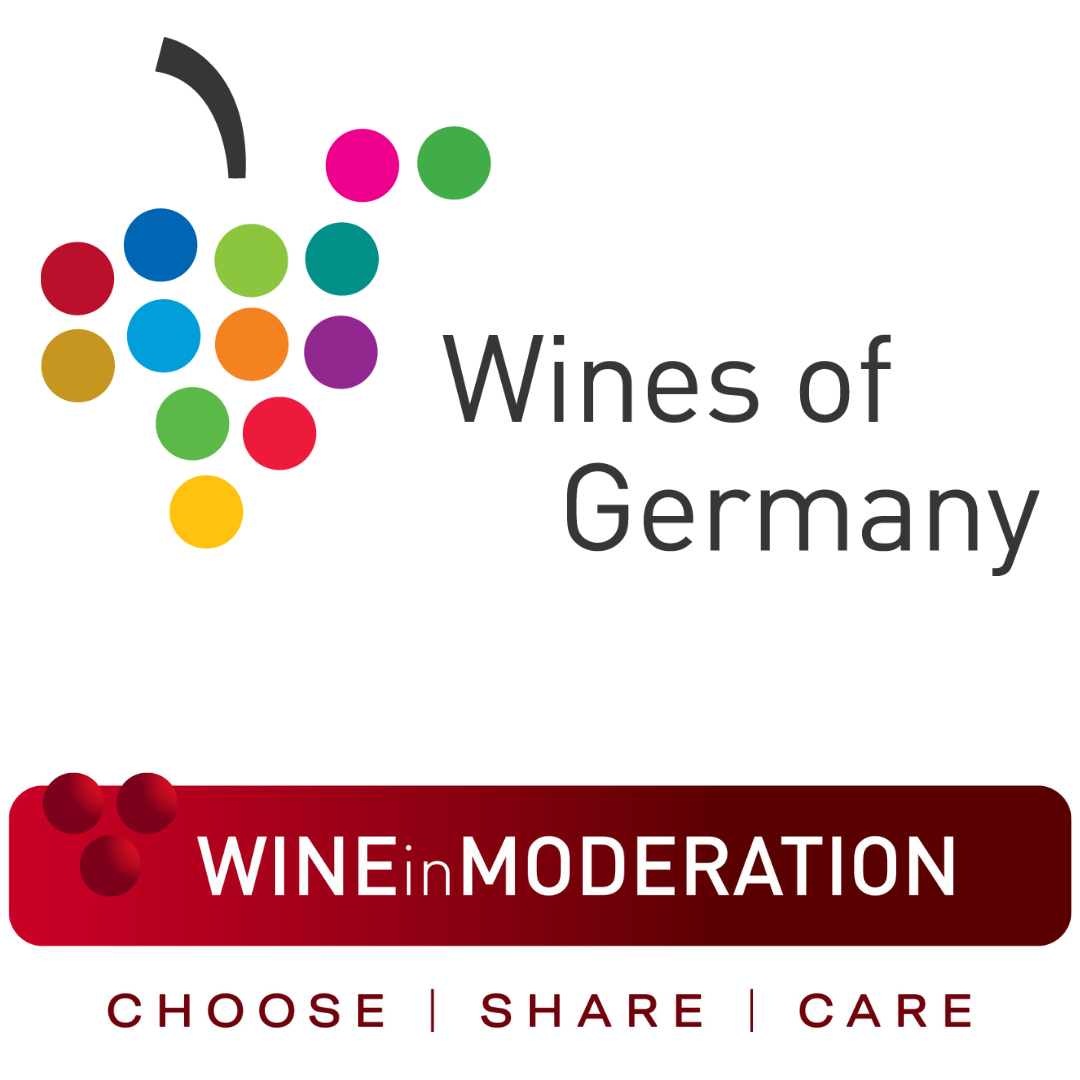Introduction
If there’s a single variety that embodies the wines of Germany, there’s no doubt it’s Riesling! The country’s most important and most popular grape variety is just as noble as it is adaptable, with a style ready to accompany any meal and any palate at any time of year. While some might think of all Riesling as sweet, and while the grape can be vinified to luscious sweetness, most German bottles are actually dry.
Beyond its versatility with food, Riesling may be most famous for reflecting the taste of the terroir in which it is grown. Germany’s vineyards and growing conditions are a match made in heaven for Riesling, whether in the Rhine Valley regions of Rheingau and Rheinhessen, the steep banks of the Mosel, or in the rolling hills of the more southerly Pfalz and Baden. As such, Riesling is grown in all 13 German wine-growing regions.
Characteristics
Color: Greenish yellow to light golden yellow
Aroma: Reminiscent of apple, peach, apricot
Taste: Delicately fruity, marked acidity
Body: Light to medium-bodied
Style: Dry to off-dry to sweet, still and sparkling
While Riesling is incredibly versatile, you can expect German Riesling to be a light to medium bodied white wine with pronounced acidity, lower alcohol, and flavors and aromas of citrus, orchard, or stone fruits. Germany is where late-ripening Riesling best exhibits its trademark acidity and unique minerality, which add balance and complexity to its fruity tones and make it utterly mouthwatering.
Also, not all Riesling is sweet! Look for Trocken or Grosses Gewächs on the label for a bone-dry bottle; Halbtrocken or Feinherb for off-dry; Spätlese or Auslese for sweet yet balanced bottles; or Beerenauslese, Trockenbeerenauslese, or Eiswein for deliciously complex dessert wines.
Riesling is one of the few white wines with tremendous aging potential, especially the sweeter styles. Plus, Riesling makes an excellent base wine for Sekt (German sparkling wine)!
Cultivation
Statistics
Total Hectares in Germany: 24,049
Percentage of Germany’s Vineyard Area: 23.3%
Worldwide Ranking in Vineyard Area: #1
German producers cultivate around 40% of the world’s Riesling, well ahead of Australia and France, which rank second and third respectively. The Pfalz and the Mosel are the two largest Riesling-growing regions in the world.
Growing Conditions
Slow to ripen, Riesling is predestined for northerly wine-growing regions, where it can finish ripening completely under the late autumn sun. It demands much of its site, yet is able to thrive in a wide range of soils. Depending on soil type and microclimate, it yields grapes from which wines with extremely diverse nuances can be produced. Heat-retaining, steep, stony sites along river valleys provide optimal conditions.
History
View More History of German WineWhile we know that the Romans first brought viticulture to the Germanic territories around 50 BC, the exact origin of the Riesling grape is a mystery. It’s widely accepted that Riesling was born in the Rhine River region and is native to Germany. The first written mention of the grape was found near the Rheingau on March 13, 1435, recorded in a cellar log of Count Katzenelnbogen in Rüsselsheim. Riesling has reigned as the king of white wine in Germany ever since, with both royal and monastic orders helping increase its plantings over the centuries.
At the height of German wine’s popularity in the 17th and 18th centuries, German Riesling fetched equal or higher prices than the best wines from Champagne or Bordeaux. It was during this time that England’s Queen Victoria visited the Rheingau and likely coined the term “hock” as a nickname for German white wine among the British – derived from the name of the town of Hochheim am Main – giving German Riesling a then unparalleled level of prestige.
Today, Riesling is again experiencing a real renaissance. The country’s offerings have grown significantly in quality and reputation.
Key Regions
View More German Wine RegionsMosel
Rheingau
Rheinhessen
Pfalz
Nahe
Food Pairings
View More German Wine and Food PairingsRiesling is well known as one of the most food-friendly wines in the world. The wine’s acidity, minerality, and lighter body are a great match for even the trickiest pairings. From sushi to fried foods to curry, Riesling proves time and time again that it’s no picky pairer.
While a jack of all trades, Riesling’s real time to shine is beside spicy cuisines. The off-dry styles especially help tame spice, while the high acidity keeps the palate fresh. A culinary globetrotter, German Riesling pairs well with cuisines from all over the world, from vibrant Indian food to American comfort classics to Thai food with a kick.
